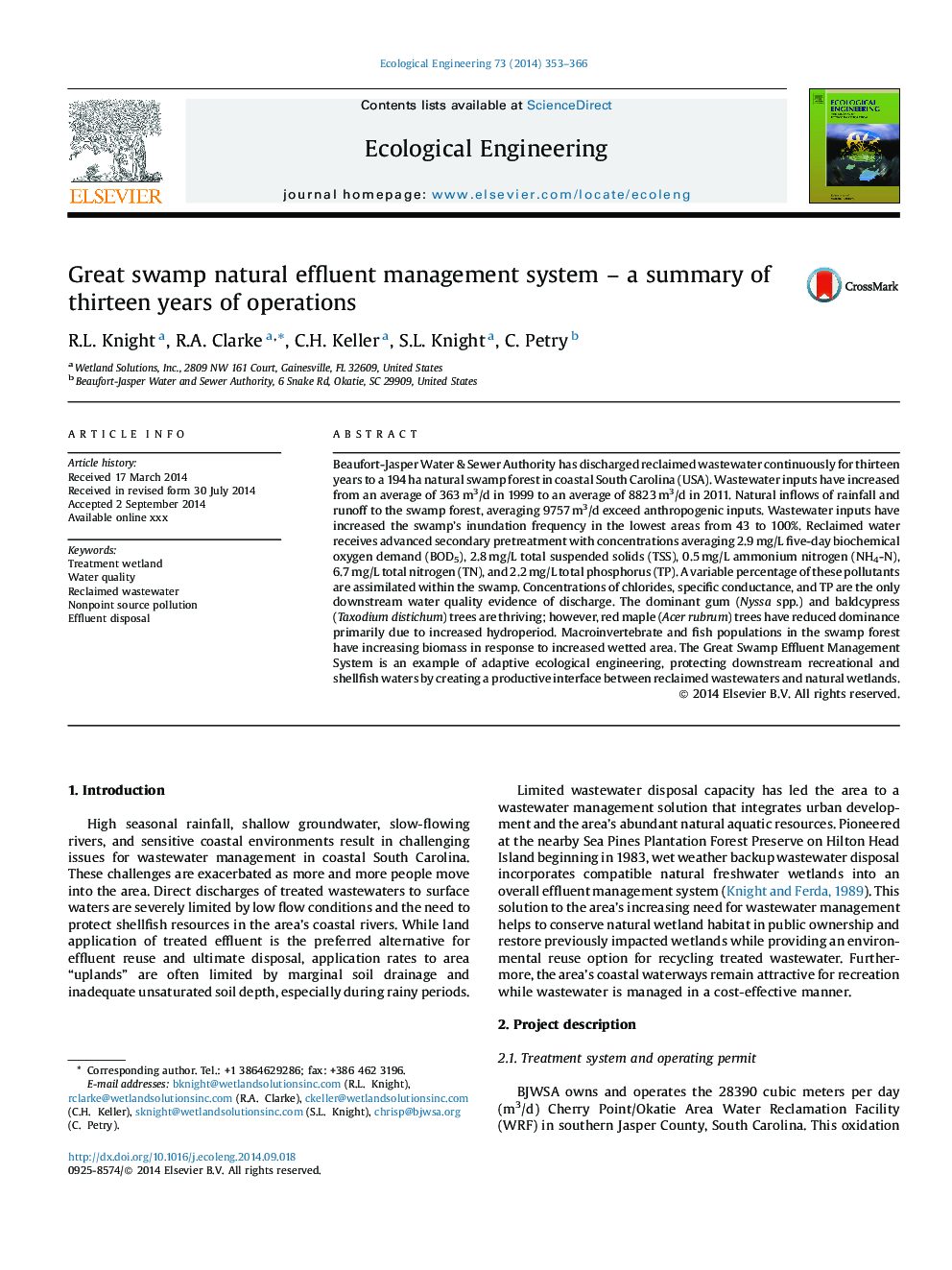| Article ID | Journal | Published Year | Pages | File Type |
|---|---|---|---|---|
| 6301948 | Ecological Engineering | 2014 | 14 Pages |
Abstract
Beaufort-Jasper Water & Sewer Authority has discharged reclaimed wastewater continuously for thirteen years to a 194Â ha natural swamp forest in coastal South Carolina (USA). Wastewater inputs have increased from an average of 363Â m3/d in 1999 to an average of 8823Â m3/d in 2011. Natural inflows of rainfall and runoff to the swamp forest, averaging 9757Â m3/d exceed anthropogenic inputs. Wastewater inputs have increased the swamp's inundation frequency in the lowest areas from 43 to 100%. Reclaimed water receives advanced secondary pretreatment with concentrations averaging 2.9Â mg/L five-day biochemical oxygen demand (BOD5), 2.8Â mg/L total suspended solids (TSS), 0.5Â mg/L ammonium nitrogen (NH4-N), 6.7Â mg/L total nitrogen (TN), and 2.2Â mg/L total phosphorus (TP). A variable percentage of these pollutants are assimilated within the swamp. Concentrations of chlorides, specific conductance, and TP are the only downstream water quality evidence of discharge. The dominant gum (Nyssa spp.) and baldcypress (Taxodium distichum) trees are thriving; however, red maple (Acer rubrum) trees have reduced dominance primarily due to increased hydroperiod. Macroinvertebrate and fish populations in the swamp forest have increasing biomass in response to increased wetted area. The Great Swamp Effluent Management System is an example of adaptive ecological engineering, protecting downstream recreational and shellfish waters by creating a productive interface between reclaimed wastewaters and natural wetlands.
Related Topics
Life Sciences
Agricultural and Biological Sciences
Ecology, Evolution, Behavior and Systematics
Authors
R.L. Knight, R.A. Clarke, C.H. Keller, S.L. Knight, C. Petry,
